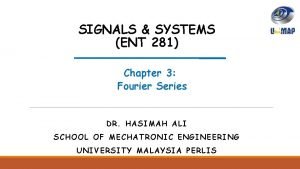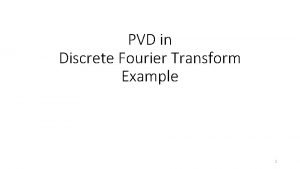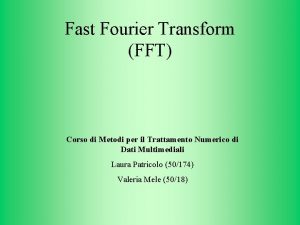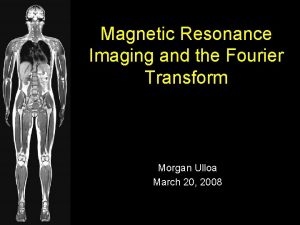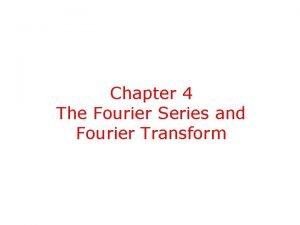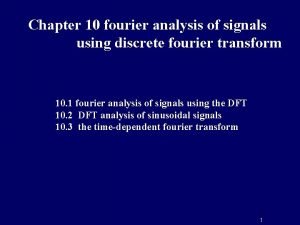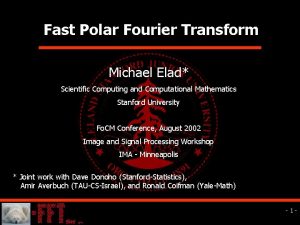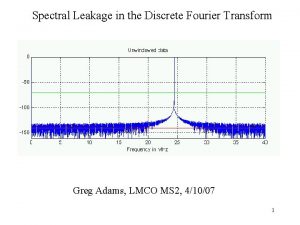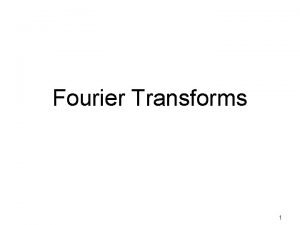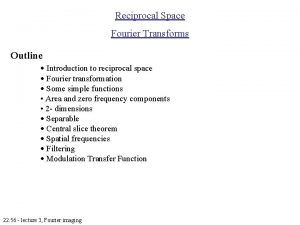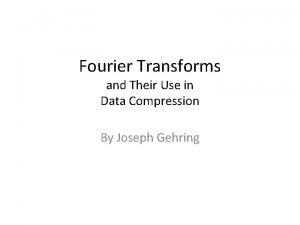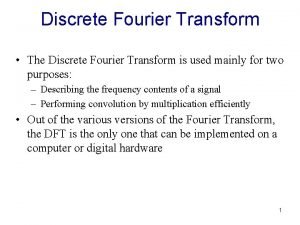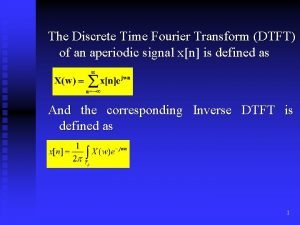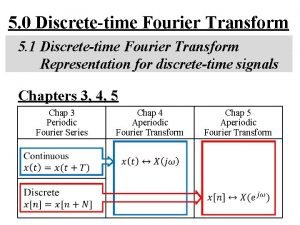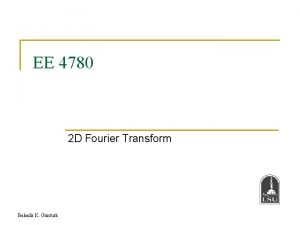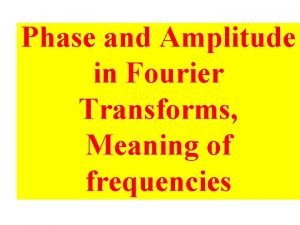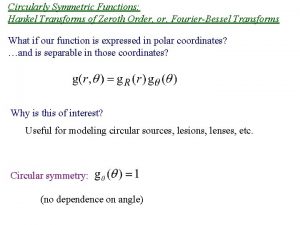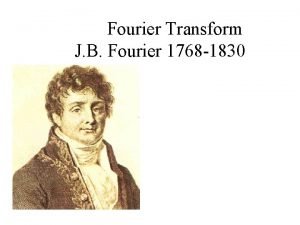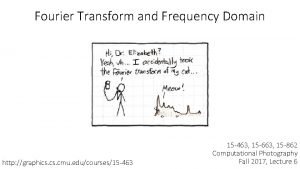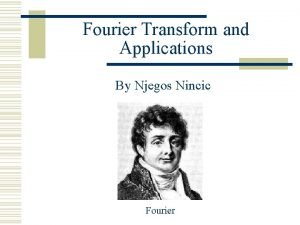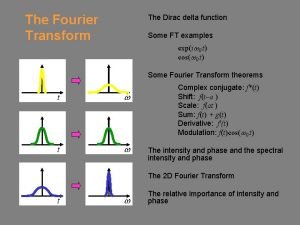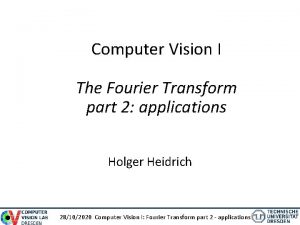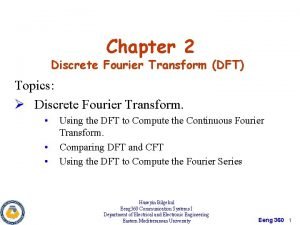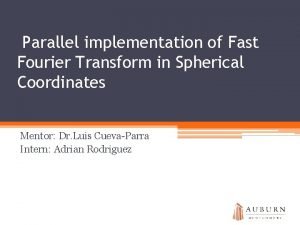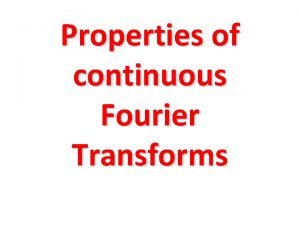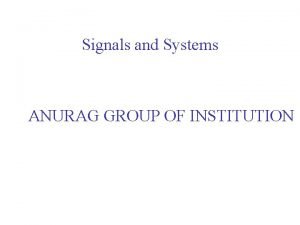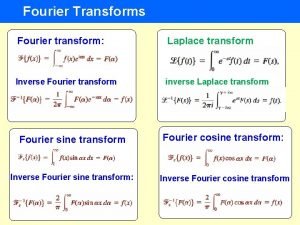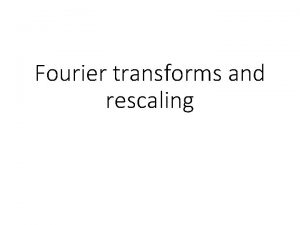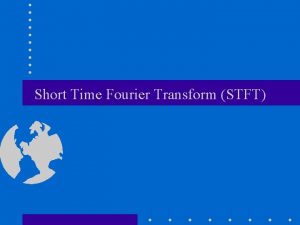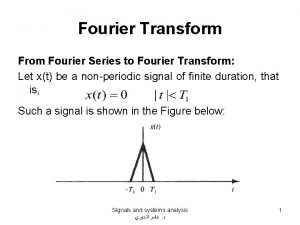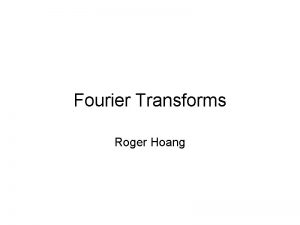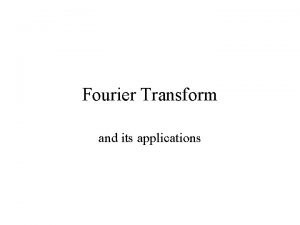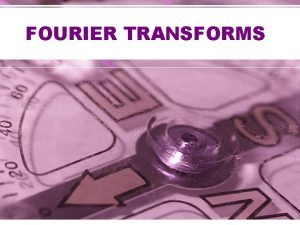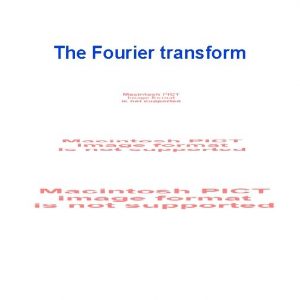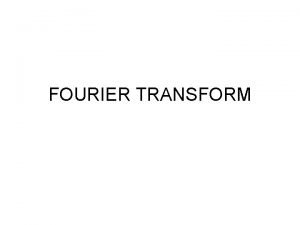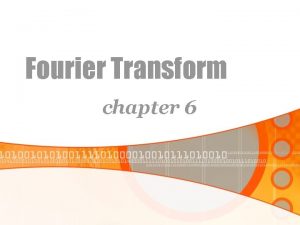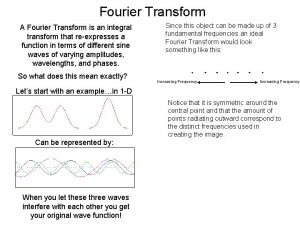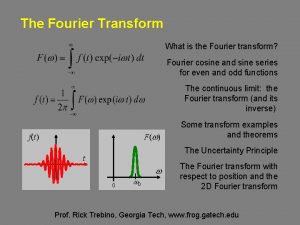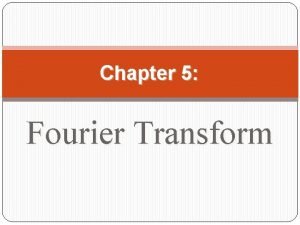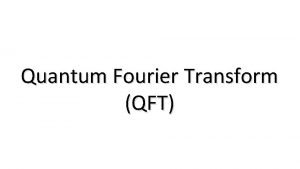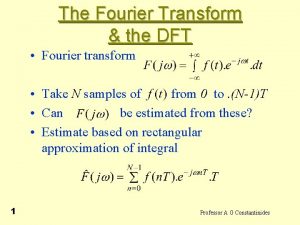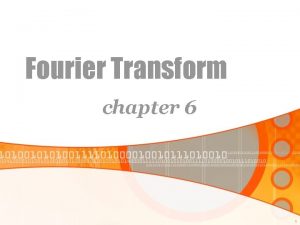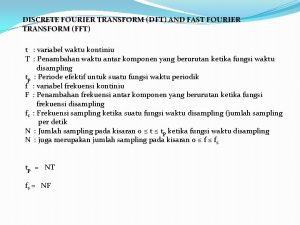Fourier Transforms 1 Fourier transform for 1 D


























- Slides: 26

Fourier Transforms 1

Fourier transform for 1 D images • 2

A nuance • 3

The full Fourier basis (N=10) Imaginary Basis number Real Highest frequency basis element Complex conjugates 4

The full Fourier basis (N=10) Imaginary Basis number Real Frequency 5

A nuance • 6

The full Fourier basis (N=10) Imaginary Basis number Real Frequency 7

Fourier transform for 1 D images • 8

Inverse Fourier transform • 9

Real images in the Fourier basis • 10

The 0 -th basis • 11

Fourier transform for 2 D images • 12

Visualizing the Fourier basis for images 13

Visualizing the Fourier transform • 14

Visualizing the Fourier transform 15

Spatial frequency in y Visualizing the Fourier transform Spatial frequency in x 16

Visualizing the Fourier transform • 17

Why Fourier transforms? • Think of image in terms of low and high frequency information • Low frequency: large scale structure, no details • High frequency: fine structure 18

Why Fourier transforms? 19

What if we zero out all high y-frequency components? 20

What if we zero out all high frequencies? Removing high frequency components looks like Gaussian / mean filtering. Is there more to this relationship? 21

Dual domains • Image: Spatial domain • Fourier Transform: Frequency domain • Amplitudes are called spectrum • For any transformations we do in spatial domain, there are corresponding transformations we can do in the frequency domain • And vice-versa Spatial Domain 22

Dual domains • 23

Filter Fourier transform (Power spectrum) 24

Filter Fourier transform (Power spectrum) 25

Gaussian filtering • Fourier transform of a Gaussian is another Gaussian! • So convolving with a Gaussian in spatial domain = multiplying with Gaussian in frequency domain • High frequencies get zeroed out • Higher the standard deviation in spatial domain = lower the std in frequency domain • More frequencies get zeroed out. 26
 Bn formula in fourier series
Bn formula in fourier series Fourier transform
Fourier transform Fast fourier transform (fft)
Fast fourier transform (fft) Mri fourier transform
Mri fourier transform Fourier series formulas
Fourier series formulas Fourier transform conclusion
Fourier transform conclusion Fourier transform in polar coordinates
Fourier transform in polar coordinates Fourier transform table
Fourier transform table Equation for fourier transform
Equation for fourier transform Fourier transform of reciprocal function
Fourier transform of reciprocal function Jpeg fourier transform
Jpeg fourier transform Fourier transform solver
Fourier transform solver Define discrete fourier transform
Define discrete fourier transform Discrete time fourier transform
Discrete time fourier transform Duality of fourier transform
Duality of fourier transform Fourier transform of an impulse train
Fourier transform of an impulse train Phase invariance
Phase invariance Circ function fourier transform
Circ function fourier transform Fourier transform
Fourier transform Fourier transform formula
Fourier transform formula Application of discrete fourier transform
Application of discrete fourier transform Fourier transform delta function
Fourier transform delta function Fourier transform computer vision
Fourier transform computer vision Fourier transform
Fourier transform Fourier transform spherical coordinates
Fourier transform spherical coordinates Integral of unit step function
Integral of unit step function Aperiodic signal
Aperiodic signal
